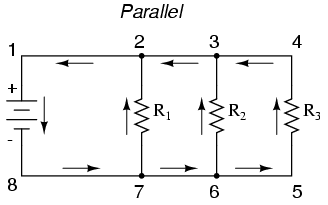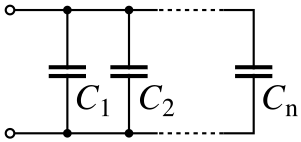Blog number:-018
Hello everybody,
Well, I hope you all will be fine.
Force on a current carrying conductor in a magnetic field





Hello everybody,
Well, I hope you all will be fine.
So, In our last session we discussed about the Introduction on Magnetic Effects of Electric Current. In that we came to know about Electromagnet, Magnetic effect of Electric current, Magnetic field, Magnetic field due to current carrying conductor, and Right-Hand Thumb Rule.
Now, In this session we are going to discuss about "Force on a current carrying conductor in a magnetic field" and "Electromagnetic Induction".
Force on a current carrying conductor in a magnetic field
We have learnt that an electric current flowing through a conductor produces a magnetic field. The field so produced exerts a force on a magnet placed in the vicinity of the conductor. And according to Newton's Third Law of Motion which tells us that "For every action, there is an equal and opposite reaction". So, The magnet must also exert an equal and opposite force on the current-carrying conductor.
The force due to a magnetic field acting on a current-carrying conductor can be demonstrated through the following Experiment:-
Take a small aluminium rod AB (of about 5 cm). Using two connecting wires suspend it horizontally from a stand, as shown in Fig. Place a strong horse-shoe magnet in such a way that the rod lies between the two poles with the magnetic field directed upwards. For this put the north pole of the magnet vertically below and south pole vertically above the aluminium rod. Connect the aluminium rod in series with a battery. Now pass a current through the aluminium rod from end B to end A. What do you observe? It is observed that the rod is displaced towards the left. You will notice that the rod gets displaced. Reverse the direction of current flowing through the rod and observe the direction of its displacement. It is now towards the right.Why does the rod get displaced?
The displacement of the rod in the above Experiment suggests that a force is exerted on the current-carrying aluminium rod when it is placed in a magnetic field. It also suggests that the direction of force is also reversed when the direction of current through the conductor is reversed.
Now change the direction of field to vertically downwards by interchanging the two poles of the magnet. It is once again observed that the direction of force acting on the current-carrying rod gets reversed. It shows that the direction of the force on the conductor depends upon the direction of current and the direction of the magnetic field.
In the Experiment, we considered the direction of the current and that of the magnetic field perpendicular to each other and found that the force is perpendicular to both of them. The three directions can be illustrated through a simple rule, called Fleming’s left-hand rule.
Fleming’s left-hand rule
According to this rule, stretch the thumb, forefinger and middle finger of your left hand such that they are mutually perpendicular. If the first finger points in the direction of magnetic field and the second finger in the direction of current, then the thumb will point in the direction of motion or the force acting on the conductor.
Devices that use current-carrying conductors and magnetic fields include electric motor.
ELECTROMAGNETIC INDUCTION
We have studied that when a current-carrying conductor is placed in a magnetic field such that the direction of current is perpendicular to the magnetic field, it experiences a force. This force causes the conductor to move. Now let us imagine a situation in which a conductor is moving inside a magnetic field or a magnetic field is changing around a fixed conductor. What will happen? To observe this effect, let us perform the following Experiment.
Take a coil of wire AB having a large number of turns. Connect the ends of the coil to a galvanometer as shown in Fig. Take a strong bar magnet and move its north pole towards the end B of the coil. Do you find any change in the galvanometer needle? There is a momentary deflection in the needle of the galvanometer, say to the right. This indicates the presence of a current in the coil AB. The deflection becomes zero the moment the motion of the magnet stops. Now withdraw the north pole of the magnet away from the coil. Now the galvanometer is deflected toward the left, showing that the current is now set up in the direction opposite to the first. We see that the galvanometer needle deflects toward the right when the coil is moved towards the north pole of the magnet. Similarly the needle moves toward left when the coil is moved away. When the coil is kept stationary with respect to the magnet, the deflection of the galvanometer drops to zero. What do you conclude from this Experiment?
You can also check that if you had moved south pole of the magnet towards the end B of the coil, the deflections in the galvanometer would just be opposite to the previous case. When the coil and the magnet are both stationary, there is no deflection in the galvanometer. It is, thus, clear from this Experiment that motion of a magnet with respect to the coil produces an induced potential difference, which sets up an induced electric current in the circuit.
Let us now perform a variation of last Experiment in which the moving magnet is replaced by a current-carrying coil and the current in the coil can be varied.
Take two different coils of copper wire having large number of turns (say 50 and 100 turns respectively). Insert them over a non-conducting cylindrical roll, as shown in Fig. (You may use a thick paper roll for this purpose.) Connect the coil-1, having larger number of turns, in series with a battery and a plug key. Also connect the other coil-2 with a galvanometer. Plug in the key. Observe the galvanometer. Is there a deflection in its needle? You will observe that the needle of the galvanometer instantly jumps to one side and just as quickly returns to zero, indicating a momentary current in coil-2
Disconnect coil-1 from the battery. You will observe that the needle momentarily moves, but to the opposite side. It means that now the current flows in the opposite direction in coil-2.
From these observations, we conclude that a potential difference is induced in the coil-2 whenever the electric current through the coil–1 is changing (starting or stopping). Coil-1 is called the primary coil and coil-2 is called the secondary coil. As the current in the first coil changes, the magnetic field associated with it also changes. Thus the magnetic field lines around the secondary coil also change. Hence the change in magnetic field lines associated with the secondary coil is the cause of induced electric current in it. This process, by which a changing magnetic field in a conductor induces a current in another conductor, is called electromagnetic induction. In practice we can induce current in a coil either by moving it in a magnetic field or by changing the magnetic field around it.
we can use a simple rule to know the direction of the induced current Called Fleming’s right-hand rule.
Fleming’s right-hand rule
Stretch the thumb, forefinger and middle finger of right hand so that they are perpendicular to each other, as shown in Fig. If the forefinger indicates the direction of the magnetic field and the thumb shows the direction of motion of conductor, then the middle finger will show the direction of induced current. This simple rule is called Fleming’s right-hand rule.
Based on the phenomenon of electromagnetic induction, the devices which is designed is Electric Generator and Transformer.
So, That's all for this session. If you have any doubt related to the topic, please comment.
Thank you.



















